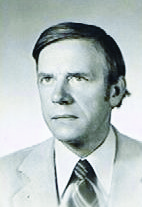Title of the work
Country of the First Edition
Country/countries of popularity
Original Language
First Edition Date
First Edition Details
Franciszek Kobryńczuk, "Koza Amalteja", Biuletyn Północno-Wschodniej Izby Lekarsko-Weterynaryjnej [Bulletin of the North-Eastern Veterinary Chamber ] 57.3 (2015): 94–96 (accessed September 13, 2022).
Web. Ewa Białek, n.d. http://www.ewa.bicom.pl/wierszedzieci/kob47.htm (acessed: September 21, 2022).
ISBN
Available Onllne
Koza Amalteja at ewa.bicom.pl (accessed: September 21, 2022).
Bulletin of the North-Eastern Veterinary Chamber 57.3 (2015): 94–96.
Genre
Narrative poetry
Poetry
Target Audience
Children
Cover

We are still trying to obtain permission for posting the original cover.
Author of the Entry:
Maciej Skowera, University of Warsaw, mgskowera@uw.edu.pl
Peer-reviewer of the Entry:
Katarzyna Marciniak, University of Warsaw, kamar@al.uw.edu.pl
Elżbieta Olechowska, University of Warsaw, elzbieta.olechowska@gmail.com

Photograph courtesy of the Author.
Franciszek Kobryńczuk
, 1929 - 2016
(Author)
A veterinarian, professor of veterinary sciences specializing in animal anatomy (an authority on the anatomy of the Polish bison), writer, and poet. 1948–1950: a member of a secret youth organization active within the post-WW2 underground connected to Armia Krajowa [Home Army], banned by the Communist regime; in 1950 he was sentenced to a 10-year prison term for this activity; fully exonerated after the fall of Communism. Graduated from the Faculty of Veterinary Medicine of the Warsaw University of Life Sciences (SGGW); from 1994 to 2000 Head of the Department of Animal Anatomy at the same University. Debuted as an author for children in 1958 with a short poem Sowa [Owl], published in children’s magazine “Miś”; contributor to several other magazines for children and young adults, such as “Świerszczyk,” “Płomyk,” “Płomyczek,” and “Mały Apostoł”; author of about 30 books for children, young adults and adults; a former member of the Polish Writers’ Union; now his poems can be found most of all online. The page ewa.bicom.pl/wierszedzieci run by a Kobryńczuk’s admirer, Ewa Białek, functions as the official website for Kobryńczuk’s poems for children.
Source:
Materials kindly provided by the Author.
Bio prepared by Maciej Skowera, University of Warsaw, mgskowera@gmail.com
Summary
Based on: Katarzyna Marciniak, Elżbieta Olechowska, Joanna Kłos, Michał Kucharski (eds.), Polish Literature for Children & Young Adults Inspired by Classical Antiquity: A Catalogue (accessed: June 11, 2021), Faculty of “Artes Liberales”, Warsaw: University of Warsaw, 2013, 444 pp.
When Cronus learns about a prophecy foretelling that one of his children will defeat him, he starts devouring them as soon as they are born. By giving Cronus a stone to eat, his wife Rhea saves the youngest child, Zeus. She secretly leaves her son on Crete to be brought up by a goat named Amalthea and by nymphs. When the goat dies, Zeus breaks off her horn and gives it to the nymphs, creating a cornucopia. Out of Amalthea’s skin he makes a shield named aegis. Later, Zeus returns to Cronus and gives him an emetic. The god vomits his children: Demeter, Hera, Hestia, Hades, and Poseidon. Zeus defeats Cronus and becomes the king of the gods.
Analysis
This work tells the myth of Zeus’ childhood, his upbringing by the titular Amalthea, and, finally, how he became the greatest of the gods. Notably, Franciszek Kobryńczuk devotes much space to the goat’s death and its horn’s use to create the cornucopia and her skin to make a shield. The Titanomachy, which becomes the subject of the final part of the poem, is presented synthetically, in a way adapted to a hypothetical children’s audience. Also, the author repeatedly uses enjambment, one of his favourite artistic devices, to highlight words separated by a clause.
Further Reading
Entry: “Amalthea (Amaltheia)” on theoi.com (accessed September 13, 2022).
Nosek, Anna, W przestrzeniach universum i regio. Wiersze dla dzieci współczesnych pisarzy regionu podlaskiego – interpretacje [In the Spaces of universum and regio: Poems for Children by Contemporary Writers of the Podlasie Region – Interpretations], Białystok: Wydawnictwo Uniwersytetu w Białymstoku, 2015.
Addenda
Before the print publication, the poem has been available online, at Ewa Białek’s website.


